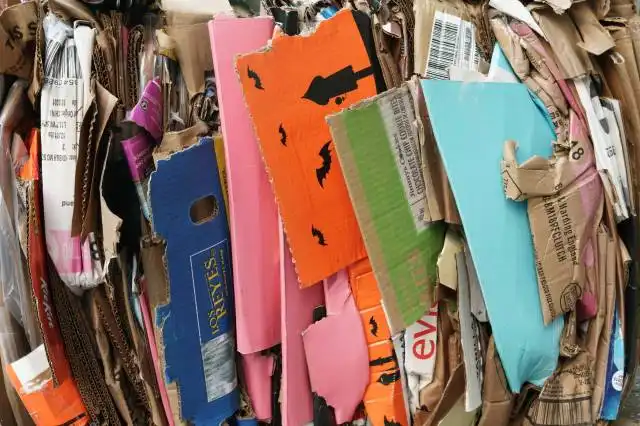Start a Coral Farm
Dive into Opportunity: Cultivating Vibrant Coral Gardens
| Updated


CORAL FARM
Who knew you could cultivate a beautiful underwater garden right in your backyard? A coral farm is a unique business that focuses on breeding and growing corals, often for both home and public aquariums. As an entrepreneur, you'd sprinkle a dash of creativity and a whole lot of love for marine life into your daily operations. With the increasing demand for eco-friendly and sustainable alternatives to wild-captured corals, this business is not just a color splash, but a splash in the market. Dive in and surface with a rare entrepreneurial pearl!
Jump to Business Plan
RELATED BUSINESS IDEAS
Browse ALL Sustainability & Eco-Friendly Initiatives Business Ideas
Discover Your Perfect Domain
Unlock the door to your online success with our hand-picked selection of premium domain names. Whether you're starting a new venture or rebranding an existing one, the right domain can set the tone for your digital presence. Browse through our curated list, each with its unique potential to enhance your brand's visibility and credibility.
CORAL FARM MINI BUSINESS PLAN
This a quick reality check to help you identify the strengths and weaknesses of your business concept before you dive in.
Business Idea: Coral Farm
Expected Percent Margins:
- Gross Margin: 60-70%
- Net Profit Margin: 20-30%
Earnings Expectations:
- Daily Earnings: $100 - $300
- Weekly Earnings: $700 - $2,100
- Monthly Earnings: $3,000 - $9,000
- Annual Earnings: $36,000 - $108,000
Actions to Hit These Numbers:
Start-up Costs:
- Aquarium Startup: Budget $15,000 - $20,000 for aquarium setup: tanks, structure, lighting, filtration systems, and livestock.
- Operating Expenses: Budget $1,500 - $2,000 monthly for utilities, feed, medicine, maintenance, and other operational costs.
Revenue Generation:
- Coral Propagation: Establish a solid coral propagation system.
- Product Range: Offer a range of products - from low-cost beginner corals to high-end rare species.
- Sales Channels: Optimize multiple sales channels - own shop, online platforms, aquarium expos, etc.
Marketing and Customer Acquisition:
- Online Presence: Establish a strong online presence through a website and social media platforms.
- Networking: Engage with aquarium clubs, expos, and forums to attract potential customers.
- Customer Education: Offer advice and guidance for those starting out in the aquarium hobby.
Business Operations:
- Purchase Frequency: Aim for daily purchases of at least 5 -15 coral frags/colonies.
- Regular Monitoring: Monitor tank conditions and coral health daily.
- Restocking: Continually cultivate and restock corals to meet demand.
These are estimations based on general coral farming operations. Profits can vary greatly based on factors like the local market, sales strategy, and the rarity and quality of corals farmed. Consulting with a business advisor or accountant can provide more personalized and accurate projections.
NOT WHAT YOU HAD IN MIND? Here are more ideas



Browse ALL Sustainability & Eco-Friendly Initiatives Business Ideas
Grab Your Business Website Name
Before you get caught up in the whirlwind of setting up your business, invest in a domain name. It's a small but significant step that lays the foundation for your brand and makes it easier for customers to find and trust you. Just like you wouldn't build a house without securing the land first, don't build a business without securing your domain name.
"Why? Can't that wait?" Here's why it shouldn't
Step 1: Determine if a Coral Farm is the Right Endeavor
Breakdown of Startup Expenses
Before starting a coral farm, it is important to understand the startup costs associated with the endeavor. This includes the cost of the land, the cost of the equipment and supplies needed to get the farm up and running, and the cost of the coral itself. Additionally, the cost of any necessary permits or licenses should be taken into account. It is also important to consider the cost of labor, as well as any other associated costs.
Breakdown of Ongoing Expenses
After the initial startup costs have been taken into account, it is important to understand the ongoing expenses associated with running a coral farm. This includes the cost of labor, the cost of supplies and equipment, and the cost of any necessary permits or licenses. Additionally, the cost of any necessary maintenance or repairs should be taken into account. It is also important to consider the cost of any necessary marketing or advertising expenses.
Examples of Ways to Make Money
There are a variety of ways to make money from a coral farm. One way is to sell the coral directly to customers. Additionally, the coral can be sold to wholesalers, who can then resell the coral to retailers. Another way to make money is to offer services such as coral propagation, coral fragging, and coral aquaculture. Additionally, the farm can offer educational services, such as classes or seminars on coral care and maintenance.
Step 2: Name the Business
When it comes to naming a business, it is important to choose something that is memorable and easy to pronounce. It should also be something that reflects the mission and values of the business. Additionally, it should be something that is not already taken by another business. To ensure the name is available, it is important to check with the local government to see if the name is already taken. It is also important to check with the United States Patent and Trademark Office to make sure the name is not already trademarked. Additionally, it is important to check online to make sure the domain name is available. Once the name is chosen, it is important to register the business with the local government and the United States Patent and Trademark Office.
Benefits of Naming the Business
Naming the business correctly can have many benefits. It can help to create a memorable brand and can help to differentiate the business from competitors. Additionally, it can help to create a unique identity for the business. It can also help to create a sense of trust and loyalty among customers. Finally, it can help to create a strong presence online, which can help to increase visibility and attract more customers.
Step 3: Obtain Necessary Licenses and Permits
To obtain the necessary licenses and permits to start a coral farm, it is important to research local and state requirements. Depending on the location, the business may need to obtain a business license, a zoning permit, a water use permit, and other permits. It is important to research the requirements in the area and to make sure that the business is in compliance with all regulations. Additionally, it is important to research any additional permits that may be needed for the business to operate legally.
Contact Local Government Agencies
After researching the local and state requirements, it is important to contact the local government agencies to obtain the necessary licenses and permits. This may include the local zoning board, the local water board, the local business licensing office, and other local government agencies. It is important to contact each agency to make sure that the business is in compliance with all regulations and to obtain the necessary licenses and permits.
Obtain Necessary Insurance
In addition to obtaining the necessary licenses and permits, it is important to obtain the necessary insurance for the business. This may include liability insurance, property insurance, and other types of insurance. It is important to research the different types of insurance that may be needed and to obtain the necessary coverage for the business.
Keep Records of All Licenses and Permits
Finally, it is important to keep records of all licenses and permits that have been obtained for the business. This includes keeping copies of the licenses and permits in a safe place and keeping track of any changes or updates to the licenses and permits. This will help ensure that the business is in compliance with all regulations and that the business has the necessary licenses and permits to operate legally.
Step 4: Secure a Location
When selecting a location for a coral farm, it is important to consider the local climate, access to water, and the availability of resources. The climate should be warm and humid, with access to plenty of sunlight. The water should be clean and free of pollutants. Additionally, the location should have access to resources such as electricity, plumbing, and other necessary supplies.
Research Local Regulations
Before selecting a location, it is important to research local regulations and zoning laws. Some areas may have restrictions on the type of business that can be operated in the area. Additionally, it is important to research any permits or licenses that may be required to operate a coral farm in the area.
Find a Suitable Building
Once the local regulations and zoning laws have been researched, it is important to find a suitable building for the coral farm. The building should be large enough to accommodate the coral farm and all of the necessary equipment. Additionally, the building should have adequate ventilation and be able to maintain a consistent temperature.
Negotiate a Lease
Once a suitable building has been found, it is important to negotiate a lease with the landlord. The lease should include details such as the length of the lease, the amount of rent, and any other terms and conditions. It is important to read the lease carefully before signing it to ensure that all of the terms are acceptable.
Step 5: Purchase Equipment
The fifth step in starting a coral farm is to purchase the necessary equipment. This will include tanks, pumps, filters, lighting, and other necessary items. It is important to research the best type of equipment for the type of coral being grown. Additionally, it is important to purchase the most efficient equipment to save on energy costs. It is also important to purchase high-quality equipment that will last for years.
Where to Buy Equipment
The next step is to decide where to purchase the equipment. There are many online retailers that specialize in aquarium supplies and equipment. Additionally, there are local pet stores and aquarium supply stores that may have the necessary equipment. It is important to compare prices and read reviews before making a purchase. Additionally, it is important to make sure the equipment is compatible with the type of coral being grown.
Cost of Equipment
The cost of the equipment will vary depending on the type and quality of the equipment. It is important to research the cost of the equipment before making a purchase. Additionally, it is important to factor in the cost of shipping and any additional fees. It is also important to factor in the cost of any additional supplies such as food, water, and cleaning supplies.
Maintenance of Equipment
Finally, it is important to consider the maintenance of the equipment. This includes regular cleaning and maintenance of the tanks, pumps, filters, and lighting. Additionally, it is important to check the equipment regularly for any signs of damage or wear and tear. It is also important to make sure the equipment is running efficiently and that the water is at the correct temperature for the type of coral being grown.
Step 6: Source Coral
Sourcing coral for a coral farm can be a difficult task, but it is essential for the success of the business. It is important to find a reliable supplier who can provide healthy, quality coral for the farm. It is also important to research the different types of coral available and decide which ones are best suited for the farm. Additionally, it is important to find out if the supplier offers any discounts or special deals that can help reduce the cost of the coral.
When sourcing coral, it is important to consider the size and shape of the coral, as well as the color and texture. It is also important to consider the cost of the coral, as some types of coral may be more expensive than others. Additionally, it is important to consider the location of the supplier, as some suppliers may be located in areas that are more difficult to access. Finally, it is important to consider the shipping costs associated with the coral, as this can add to the overall cost of the coral.
Step 7: Market the Business
The seventh step in starting a coral farm is to market the business. There are many ways to market a business, but some of the most effective include creating a website, utilizing social media, and attending trade shows and conferences.
Creating a website is a great way to showcase the business and its products. It is important to make sure the website is professional and easy to navigate. Additionally, the website should include information about the business, such as its mission and values, a list of products and services, and contact information.
Social media is another great way to market the business. Platforms such as Facebook, Twitter, and Instagram can be used to post updates, photos, and videos about the business. Additionally, these platforms can be used to interact with customers, answer questions, and build relationships.
Attending trade shows and conferences is another great way to market the business. These events allow the business to showcase its products and services to potential customers. Additionally, these events provide an opportunity to network with other businesses and build relationships.
Benefits of Marketing the Business
Marketing the business is important for its success. It allows the business to reach potential customers and build relationships with them. Additionally, marketing helps to build brand recognition and create a positive reputation. Finally, marketing can help to increase sales and profits.
Step 8: Hire Employees
When hiring employees, it is important to find people who are passionate about the business and have the skills and knowledge to help the business succeed. It is also important to make sure that the employees are properly trained and understand the company’s policies and procedures. Additionally, it is important to make sure that the employees are properly compensated and have a safe working environment. It is also important to make sure that the employees are provided with the necessary tools and resources to do their job. Finally, it is important to make sure that the employees have access to the necessary training and development opportunities.
Benefits of Hiring Employees
Hiring employees can be beneficial for a business in many ways. Employees can help to increase the productivity of the business and can help to reduce the amount of time it takes to complete tasks. Additionally, employees can help to increase the quality of the work that is being done and can help to reduce the amount of mistakes that are made. Furthermore, employees can help to increase the customer service that is provided and can help to create a better customer experience. Finally, employees can help to increase the overall efficiency of the business and can help to reduce the amount of resources that are needed to complete tasks.
Step 9: Monitor the Business
Monitoring the business is essential to ensure that the coral farm is running smoothly and efficiently. To do this, it is important to keep track of the number of corals in the farm, the amount of money spent on supplies and labor, and the amount of money earned from selling the corals. Additionally, it is important to track the health of the corals and the water quality in the farm. This can be done by regularly testing the water for pH, salinity, and other parameters. It is also important to monitor the temperature of the water, as this will affect the health of the corals. Finally, it is important to keep track of the number of corals that are sold and the amount of money earned from the sales.
Tips for Improving the Business
Once the business is running, it is important to look for ways to improve it. This can include increasing the number of corals in the farm, investing in better equipment, and finding new ways to market the corals. Additionally, it is important to look for ways to reduce costs, such as by finding cheaper suppliers or by using more efficient methods for growing the corals. Finally, it is important to look for ways to increase the number of customers, such as by offering discounts or by advertising the business online.
EXPLORE MORE CATEGORIES
Browse ALL Business Idea Categories
TAKE THE NEXT STEPS









